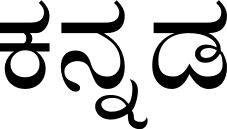Difference between revisions of "Language/Kannada/Culture/Customs"
m (Quick edit) |
m (Quick edit) |
||
| Line 59: | Line 59: | ||
<span gpt></span> <span model=gpt-3.5-turbo></span> <span temperature=1></span> | <span gpt></span> <span model=gpt-3.5-turbo></span> <span temperature=1></span> | ||
==Related Lessons== | |||
* [[Language/Kannada/Culture/Literature|Literature]] | |||
* [[Language/Kannada/Culture/Festivals|Festivals]] | |||
* [[Language/Kannada/Culture/Cinema|Cinema]] | |||
{{Kannada-Page-Bottom}} | {{Kannada-Page-Bottom}} | ||
Revision as of 21:06, 22 March 2023
As a Kannada language teacher, I believe that learning about a culture's customs and social norms is just as essential as learning the language. Understanding these customs will help you communicate better and avoid any cultural misunderstandings. In this lesson, we will learn about some of the most common Kannada customs and etiquette.
Greetings
Before we dive into the customs, let's start with a quick review of Kannada greetings. In Kannada, it is common to greet people with "Namaskara" which means hello or "Namaste" which is a more formal greeting. When meeting someone for the first time, it is customary to ask "Nīvu hege iddīri?" which means "How are you?". It is also common to greet people with a smile and a handshake.
Customs and Etiquette
Here are some of the most common Kannada customs and etiquette:
- When visiting someone's home, it is customary to remove your footwear outside the house.
- It is considered respectful to address elders and guests with the honorific suffix "-avaru".
- It is polite to wait for your turn to speak during a conversation and not interrupt someone while they are speaking.
- When eating with your hands, only use your right hand. The left hand is considered unclean.
- When visiting a temple, it is important to dress modestly and remove your footwear before entering.
- When attending a wedding or other formal event, it is customary to dress in traditional attire.
Table Manners
In Kannada culture, food is an important aspect of daily life, and table manners play a significant role in socializing. Here are some table manners to keep in mind when dining with Kannadigas:
| Kannada | Pronunciation | English |
|---|---|---|
| ಪಂದಿತ್ತು (Pandittu) | pan-dhit-tu | Please serve |
| ಧನ್ಯವಾದಗಳು (Dhanyavaadagalu) | dhun-yaa-vaada-ga-lu | Thank you |
| ಹೊಟ್ಟೆ ತುಂಬಾ ಆಯಾಸ ಆಗಿದ್ರೆ ಸ್ವಲ್ಪ ಮಾತ್ರ ತಿಂದುಕೊಳ್ಳಿ (Hotte tumba aayasa agidre swalpa matra tindukoḷḷi) | ho-tte tun-baa aa-ya-sa aa-gi-dre sva-lpa ma-tra tin-du-ko-lli | Eat a little if your stomach is full |
It is customary to eat with your hands in Kannada culture, but utensils are also commonly used. When eating with your hands, use only your right hand, as the left hand is considered unclean. It is also considered rude to waste food, so take only what you can eat.
Festivals
Kannadigas celebrate a variety of festivals throughout the year. Here are some of the major festivals and their significance:
- Ugadi: This is the Kannada New Year, which usually falls in March or April. It is celebrated with special dishes and rituals.
- Ganesha Chaturthi: This festival honors the elephant-headed Hindu god, Ganesha. It is celebrated with great enthusiasm and devotion.
- Diwali: Known as the "Festival of Lights", Diwali is celebrated with the lighting of oil lamps and the exchange of sweets and gifts.
- Dasara: Also known as Navaratri, this festival is celebrated in honor of the Hindu goddess Durga. It is a 10-day festival that symbolizes the triumph of good over evil.
Learning about customs and festivals is an important part of understanding a culture. By learning about Kannada customs and etiquette, you will be better equipped to communicate and form meaningful relationships with Kannadigas.
Related Lessons
